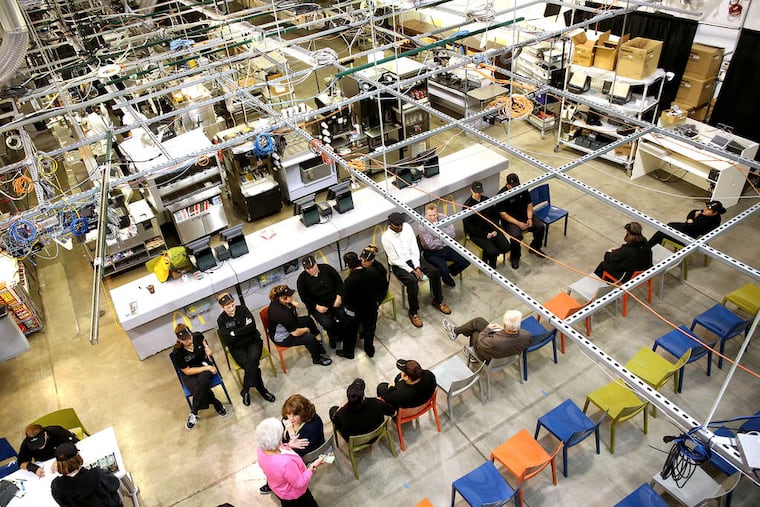McDonald's Innovation Center an idea hub
The goal: Find ways to improve customer experience and stem declining sales.

Inside a nondescript warehouse about 30 minutes from McDonald's suburban Chicago headquarters, uniformed crew members cook burgers, sling fries, and hand food to customers.
But the cashiers accept fake money, workers and customers wear tracking chips to record their movements, and customers mimic going through the drive-through in plastic chairs, not cars.
Here at the Innovation Center, the world's largest fast-food operator studies, dissects and tweaks current routines as well as proposed ideas that could quicken the operations at about 34,000 McDonald's restaurants worldwide.
The center is far enough from McDonald's headquarters that it can run on its own, yet close enough for interaction when needed, said Laurie Gilbert, a 22-year McDonald's veteran who is vice president of restaurant innovation.
"There was a very intentional decision made not to have it be right there, so we could create a bit of a different culture, have a safe place to experiment and learn," Gilbert said. "Make no mistake, it's McDonald's through and through, you can feel it. And yet, with our own flavor."
Opened in 2001, the Innovation Center brings together a variety of players, from engineers, researchers and designers to visiting vendors and franchisees, as they work to improve service.
The mission is particularly important now because McDonald's is grappling with its longest stretch of declining sales at long-standing restaurants in more than a decade. Shortening service times, ensuring that kitchens and crew members are ready to prepare new foods and drinks, and updating the ordering process are all key to achieving the goal.
Most days, at least one of the mock restaurants housed in the warehouse buzzes like an actual McDonald's during the breakfast, lunch or dinner rush.
Every move the crew takes can be studied, by people watching from inside the kitchen, across the counter, from an observation deck above, or later, by reviewing video. Those tracking tags worn by workers and customers log how long it takes an order to make its way through the kitchen, through the mock drive-through or over a counter.
Customers, played by retirees or students, don't always choose their meals. Often, orders are re-created from a previous day at an actual restaurant.
"The focus is really on what customers are looking for," said Melody Roberts, McDonald's senior director of experience design innovation, noting that consumer preference for custom drinks, for example, would shape the way kitchen space is allocated.
In the 13 years the current center has been operating, it has had some changes, including the addition of more kitchens. A second floor was added, with the observation deck, desk space and meeting rooms meant to inspire, named after innovators such as Leonardo da Vinci and Steve Jobs. About 80 crew members and five managers work in the test restaurants.
Ed Bridgman, senior director of innovation and operations, got his start working at a McDonald's restaurant 40 years ago. Together, he and others at the center hold 49 patents in areas such as kitchen operating systems and drive-throughs, dozens of which are displayed on the building's walls.
"I've been fortunate to go to some large manufacturing innovation centers," Bridgman said. "This one is much more interactive and trying to deal with, from my opinion, a much more complicated set of environments."
Some sophisticated equipment can take three to four years to create and test. Processes are tweaked multiple times before making it into restaurants. Other proposed changes don't make it out of the building.
A few years ago, for example, McDonald's toyed with a dispenser that would put the right number of Chicken McNuggets into a basket before cooking, rather than having an employee count them out.
"The nugget dispenser worked, but at the end of the day, it didn't really make our crew's life that much easier," Gilbert said. That project, as she put it, is "on the shelf."
Another shelved project, at least for now, involved a 3-D printer housed in what looked like a giant Happy Meal box to create toys for children's meals. A version of it sits upstairs in the center.
McDonald's executives believe their space is the industry's most advanced.
Rival Wendy's has a culinary innovation center attached to its Ohio headquarters, said chief communications officer Liliana Esposito. The center, opened in 2003, has a setup replicating the cooking area of a Wendy's and has allowed the company to double consumer testing.
Wendy's also tests new products, equipment and technology at an updated restaurant.